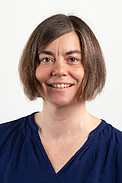Thesis Topic: Unlocking the physics of the circumgalactic medium of galaxies through machine learning at the simulation-observation interface
Thesis Supervisors: Celine Peroux and Dylan Nelson (University of Heidelberg, Germany)
Abstract
"Baryons" refers to the normal matter of the Universe. Surprisingly, only a minority of this normal matter can be probed by observations of starlight from galaxies. The PhD project aims at studying the remaining baryons, as traced by gas in the circumgalactic medium (CGM) and intergalactic medium (IGM). Baryons from the cosmic web accrete onto galaxies, cool into a phase which fuels star formation, enabling feedback to expel material in powerful outflows which transform the surrounding CGM (Tumlinson+17). The overarching objective of the project is to study the physical processes by which gas changes phases and flows into, through, and out of galaxies in the so-called baryon cycle (Peroux&Howk20), thereby probing the growth of structure in the Universe.
One of our most powerful tools to observationally probe the circumgalactic medium is through the technique of examining gas absorption lines in the spectra of background sources whose lines of sight pass through a foreground galactic halo. These absorption signatures enable us to study the abundance, distribution, chemical properties, and kinematics of halo gas by probing matter at different densities, metallicities and temperatures. While individual absorption measurements are limited to a pencil-beam along the line-of-sight and hence sample a small section of the host galaxy, large samples allow us to statistically measure the mean properties of galaxies by combining many sightlines.
The PhD project will combine machine learning (ML) techniques (e.g. Szakacs et al. 2023) applied at the simulation-observation interface to draw a contemporary picture of the physics at play in the CGM and IGM. The project will begin with synthetic observations generated from IllustrisTNG simulations (Nelson et al. 2019) in order to develop and train sophisticated ML algorithms and tools. These will then be applied to observational data in order to extract physical insights. In particular, new observations from the ByCycle survey -- combining the powerful synergy of absorption and emission diagnostics -- will include one million background quasars and 1.5 million foreground objects in the same sky regions with the VISTA/4MOST multi-object spectrograph.
The project is part of an international team effort to study the cosmic baryon cycle through multi-wavelength observations and simulations of galaxies, and the student will be part of an active and large team of scientists. Trips to the observatories in Chile will be planned.


